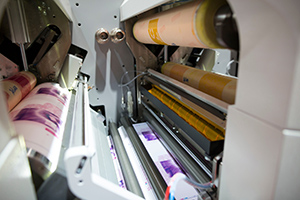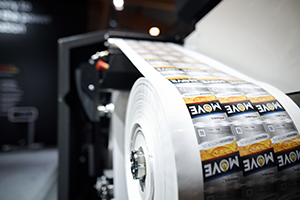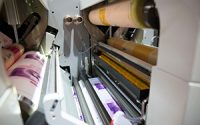Switzerland The label printing market continues to grow: the global market was valued at $36.98 billion in 2017 and is forecast to reach $45.22 billion by 2022.
This is driven in part by changing market dynamics and ever-evolving demands from label customers, with a growing number of SKUs, a dramatic reduction in average job lengths and life-cycles for mass-produced products and a significant increase of the regulatory content that is required on products. But it is also due – in part at least – to the fact that players in the label printing industry have been willing to embrace change and pioneer new printing and converting methods. The result in recent years has been an increasing number of label types and variety of labels in the industry.
So, is that set to continue? And should we look to the label industry as a weather vane for the packaging industry overall?

Trend 1: The integration of digital and analogue
The label sector has clearly been an early adopter of digital printing. Digitally-printed labels have boomed in recent years, driven by market demands for shorter runs, more customised packaging, greater sustainability and the need to help products stand out even more.
The rest of the packaging market is following. Indeed, we have recently seen a tipping point in the industry with more new narrow web digital press installations than flexo presses. Beyond labels, analysts expect a strong growth in digital for corrugated, folding carton and flexibles.
The capabilities of digital printers and presses are increasing, but such breakthrough innovations can take more time than expected to become mainstream. Digital represents an entirely new way of processing jobs, from the file to the end product, and step-by-step, it will enable companies to reach new frontiers in quality, productivity and overall workflow.
Trend 2: The rise of cus emium labels
Analog printing is well suited for mid-to-long applications and will continue to contribute to a large percentage of global production. Meanwhile, demand is evolving rapidly towards more customisation and promotion, which means smaller runs, greater cost constraints and eventually the transformation of the entire digital workflow. Being able to produce results with maximum flexibility and to an optimum economical value will give digital printing a huge foothold in all sectors.
Trend 3: Demand for better colour control ñ from file to finished product

Understandably, Brand Owners have a great demand for colour consistency. They know that their customers subconsciously look to the packaging and the label for cues about quality, so any discrepancy issues with brand colours can lead to a negative perception.
The increasing demand for colour consistency is leading the drive towards the Extended Colour Gamut (ECG). ECG printing uses three additional ink colours – orange, green and violet (OGV) – on top of the conventional colours of cyan, magenta, yellow, and black (CMYK), making for a total of seven in total (CMYKOGV). Printing with a traditional CMYK blend only matches approximately 60% of the Pantone – but when printing with a CMYKOGV blend, it is possible to match 90%+ of the Pantone. Again, in this domain, innovation will be at the forefront to improve ink while increasing the Pantone reach.
Trend 4: Increasing automation and Internet of Things (IoT)
The growing demands on label printers for shorter print runs, faster turnaround, and greater flexibility and customisation is driving the industry towards higher levels of automation across digital and analogue printing methods.
Ultimately, this will likely lead towards integrated workflows optimising time to market and increasingly satisfying consumer demands. Already, systems can link to Cloud applications and monitor machines and productivity.
Higher levels of automation of course have an impact on the type of personnel needed. Human errors are the biggest reason for product recalls. A more important role will be taken by the pre-press specialist and the supply chain people, ensuring there are no bottlenecks, but rather a smooth automated flow.
The market dynamics are changing and ever-evolving demands from label customers, with a growing number of SKUs, a dramatic reduction in average job lengths and life-cycles for mass-produced products and a significant increase of the regulatory content that is required on products
Federico D’Annunzio, Program Manager of joint BOBST ‒ Mouvent Hybrid Label presses




